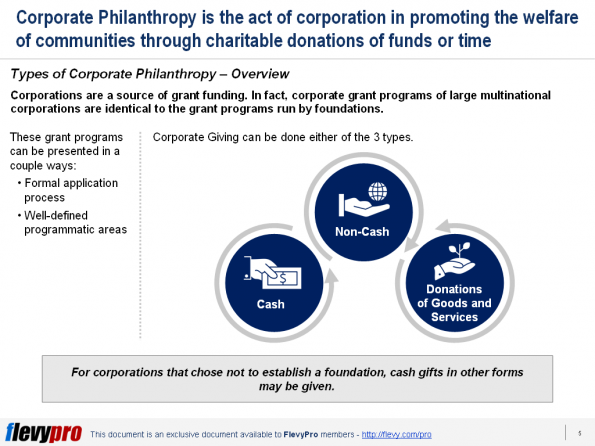
 Become a PowerPoint Guru by Dave Tracy
Become a PowerPoint Guru by Dave Tracy
Learn the methodologies, frameworks, and tricks used by Management Consultants to create executive presentations in the business world.

 Become a PowerPoint Guru by Dave Tracy
Become a PowerPoint Guru by Dave Tracy
The business has become more challenging as the global market becomes more demanding. This change in the global market is putting pressure not only on Management but also on the Board. Strategy Development now demands that organizations should not only be effective but there should also be Board Excellence.
not only on Management but also on the Board. Strategy Development now demands that organizations should not only be effective but there should also be Board Excellence.
Today, the demand has ceased to be about spending more time. Boosting the effectiveness of the Board is not anymore about spending more time. The urgent call now is to focus on changing the nature of engagement between directors and the executive teams that they work with.
Changing the nature of the Board Engagement will lead Directors and CEOs to make effective use of their limited time. It will build the capacity of the Board Members to bring disparate points together. This is critical when keeping a Board functional rather than dysfunctional.
There are no shortcuts to building and maintaining a well-attuned Board and executive mechanics. These require hard work from the Board Members and a CEO with a thick skin. But a good Director will provide the extra effort, and an effective CEO will make the most of an engagement board’s limited time.
Board Engagement can be built and it can be improved. The nature of engagement between the Directors and Management need not remain at a standstill. There are 5 areas to improve Board Engagement.
Board Engagement is very crucial at this point in time. It is not enough that they spend more time in Board meetings. It is not enough that they continue to assume roles that they have been doing before. The changing business environment has raised its spectrum when it comes to performance and effectiveness. And this does not only include Management or its employees. This now also involves the Board. Hence, the Board of today more be more engaged and take an active part in areas that are crucial to the organization to remain competitive.
Interested in gaining more understanding of Board Excellence through Engagement? You can learn more and download an editable PowerPoint about Board Excellence: Engagement here on the Flevy documents marketplace.
Are you a management consultant?
You can download this and hundreds of other consulting frameworks and consulting training guides from the FlevyPro library.
Organizations are continually searching for innovative ways of enhancing competitiveness. This is brought about by evolving external factors  such as changing demographics, globalization, and technology. Because of changing dynamics, it has required managers to rapidly rethink and retool their organizational management strategies.
such as changing demographics, globalization, and technology. Because of changing dynamics, it has required managers to rapidly rethink and retool their organizational management strategies.
Coming up with the appropriate strategies calls for an increasing need for organizational diagnosis in developing and maintaining a competitive advantage. Researchers believe that in conducting organizational diagnosis, organizational effectiveness must be viewed from a systems perspective using a multidimensional approach in assessing the factors affecting enterprise performance management.
At this point wherein the role of organizational climate in business performance has become significant, there is a need for a business model that is most influential. To date, the Burke-Litwin Change Model is the best known and most influential model suitable when it comes to organizational climate.
The Burke-Litwin Change Model is seen as a conceptual framework that can best describe the relationships between different features of the organization, as well as its context and effectiveness.
According to Burke and Litwin (1992), Change Management models are not meant to be prescriptive. They are meant to provide a means to diagnose, plan, and manage change. Using the Burke-Litwin Change Model will provide organizations an effective diagnostic tool to improve overall organizational performance. It is a useful model for understanding the organizational change process.
The Burke-Litwin Change Model, as a change management tool, assumes 12 organizational elements that determine a change within an organization.
The 12 key drivers of the Burke-Litwin Change Model interact with and affect each other. The change in the 12 key drivers brings about a series of changes in the structure, practices, and the system of the organization.
The 12 key drivers have been organized based on their specific roles within the organization.
Input.
Throughput: Transformational Drivers. Transformational Drivers are those that make up the fundamental structure of an organization. It relates to the organization as a whole. There are 3 Transformational Drivers.
The 3 key drivers have over-riding importance of dealing with a change that is intended to share up “the way things are done around here.”
Throughput: Transactional Drivers
Transactional drivers are drivers that are more easily changed, but rarely have the same kind of impact on organization-wide performance. This concerns daily activities that take place in organizations and their mutual cohesion. There are 7 Transactional Drivers.
The Transactional Drivers can affect performance. However, performance can only be long-lasting if these key drivers are aligned. The 7 key drivers are critical in their role of supporting the change process.
Output
Individual and Organizational Performance is the 12th key driver. It is the outcome of the change.
The only thing that is constant is change. As output changes, so does the input and the factors of change. Individual and Organizational Performance is the measure of the effectiveness of the change. It measures the performance levels of both the individual employee and on the departmental and organizational level.
Individual and Organizational Performance can be measured on the basis of turnover, productivity, quality requirements, efficiency, and customer satisfaction. This is the key driver that impacts on the external environment.
Interested in gaining more understanding of the Burke-Litwin Change Model? You can learn more and download an editable PowerPoint about the Burke-Litwin Change Model here on the Flevy documents marketplace.
Are you a management consultant?
You can download this and hundreds of other consulting frameworks and consulting training guides from the FlevyPro library.
Many large corporations depend on M&A for growth and executives can boost the value that deals create. But poorly executed M&A can saddle  investors with weak returns on capital for details. In fact, the margin between success and failure is slim.
investors with weak returns on capital for details. In fact, the margin between success and failure is slim.
Many Boards are reluctant to cross the line between governance and management. The level of engagement is often outside the comfort zone for some executives and directors. As such, they miss opportunities to help senior executives win at M&A.
There is a need to modernize the Board’s role in M&A. Modernizing the role of the Board in M&A can result in the alignment of the Board and management on the need for bolder transactions with more upside potential. Further, this is essential in achieving a competitive advantage.
There are 3 core opportunities for the Board to play an impactful role in M&A.
The 3 core opportunities can promote greater Board engagement. When this happens, discrete deals can be converted into ongoing deal processes and dialogues that can deliver greater value from M&A.
The potential of the 3 Core Opportunities to embolden the role of the Board in M&A is great. Organizations just need to have a good understanding of each core opportunity and the underlying key areas or dimensions of each key area. Let us take a look at the 1st Core Opportunity: Potential for Value Creation.
The Potential for Value Creation has 3 critical key areas that can challenge that lead opportunistic transaction to succeed. One critical key area is Strategic Fit.
Strategic Fit is key to determining why a company is a better owner than competing buyers. Deals driven by strategy succeed more often when they are part of a stream of similar transactions that support that strategy. This is a key element in Strategy Development.
How can we enhance the role of the Board relative to this key area? The Board can play a vital role in clarifying the relationship between a potential transaction and strategic planning. They are also in the best position to define how the deal will support organic-growth efforts in target markets and provide complementary sources of value creation.
The other key areas under the Potential for Value Creation are Financial Statements and Risks vs. Rewards. The Financial Statements is a key area that can correct the Board’s tendency to put emphasis on price-to-earnings multiples which can be limiting. The Risks vs. Rewards, on the other hand, is a key area that challenges the Board to acknowledge uncertainties in pro forma.
The other 2 Core Opportunities also have their own essential points or dimensions the Board must focus on. Only then can these core opportunities be of the maximum potential of modernizing the Board’s role in M&A and gaining the greatest value.
Interested in gaining more understanding of achieving Board Excellence through M&A? You can learn more and download an editable PowerPoint about Board Excellence: M&A here on the Flevy documents marketplace.
Are you a management consultant?
You can download this and hundreds of other consulting frameworks and consulting training guides from the FlevyPro library.
When things go wrong on a grand scale, often we direct our attention to the role of the Board. Debate exudes and often gets heated up and  intensifies. This often happens when the Board spends more time looking in the rearview mirror and not enough scanning the road ahead. When this happens, governance suffers.
intensifies. This often happens when the Board spends more time looking in the rearview mirror and not enough scanning the road ahead. When this happens, governance suffers.
Often, the Board of Directors spend a bulk of its time on quarterly reports, audit reviews, budgets, and compliance. However, with the change in the business environment, there is a greater need to redirect the Board’s attention on matters crucial to the future prosperity and direction of the business. One of this is Strategy Development. Achieving this requires the development of a dynamic Board with a long-term mindset capable of creating forward-looking agenda and activities that get sufficient time over a 12-month period.
The Board Agenda is changing. It is becoming more dynamic and it has increasingly highlighted forward-looking activities. Long-term economic, technological, and demographic trends are radically shaping the global economy. The second Industrial Revolution now requires the Board to shift focus. The Board is now challenged to focus on matters crucial to achieving Operational Excellence and the future direction of the organization. Directors must devote more time to strategic and forward-looking aspects of the agenda. They must cease seeing the job as supporting the CEO, but instead, be strategic in making sure long-term goals are formulated and met.
Having a forward-looking Board has now become every organization’s imperative. However, this can only be achieved if there is a solid foundation that is anchored on three guiding principles. Organizations must have the right Board Member, a clear definition of the Board’s role, and greater time commitment from members. At this time when a long-term mindset has come to a fore, these have become essential.
“Strategy without tactics is the slowest route to victory. Tactics without strategy are the noise before defeat.” – Sun Tzu
Organizations can undertake 4 essential tactics to encourage the Board to have a long-term mindset.
The 4 tactics are essentially effective in creating long-term mindsets. When this is achieved, Board Excellence is never far behind.
Interested in gaining more understanding of achieving Board Excellence via a Long-term Mindset? You can learn more and download an editable PowerPoint about Board Excellence: Long-term Mindset here on the Flevy documents marketplace.
Are you a management consultant?
You can download this and hundreds of other consulting frameworks and consulting training guides from the FlevyPro library.
The pressure on Boards and Directors to raise their game has remained acute. A survey of more than 770 directors from public and private  companies across the industries around the world suggested that some are responding more energetically than others.
companies across the industries around the world suggested that some are responding more energetically than others.
There is a dramatic difference between how directors allocate their time among boardroom activities and the effectiveness of the Boards. One in four directors assessed their impact as moderate or lower, while others reported as having a high impact across Board functions.
Today, the call to become more forward-looking and achieving Board Excellence is further highlighted. This is further emphasized when the Board and Management are pressured to find the best answers to global business concerns and issues. In Strategy Development, this becomes invaluable. It does not only lead to clearer strategies but also the creation of alignment essential in making bolder moves.
While these are essential, there is a need to raise the quality of engagement on strategy between the Board and Management for each group to achieve smarter options. This is possible only if organizations have high impact, strategic Boards in place.
High impact, strategic Boards have a greater impact as they move beyond the basics and face increasing challenges.
Business is fast-changing and rapidly transforming. The global economy is increasingly pushing businesses, as well as the Board to face a gamut of challenges.
What are the 2 main challenges facing Boards today?
First is Time Commitment. Working at a high level takes discipline – and time. In fact, the greater time commitment is expected on high impact activities. The Board often have 6 to 8 meetings a year. As a result, they are often hard-pressed to get beyond the compliance-related topics to secure the breathing space needed for developing a strategy.
Often, it is the very high impact Directors who invest more time compared to moderate or lower average Directors.
Who are your very high impact Directors? They are those spend a total of 40 days a year working for the Board compared to 19 days of low impact Directors. An extra 8 workdays a year is invested in strategy and an extra 3 workdays a year are spent on Performance Management, M&A, Organizational Health, and Risk Management.
High impact Directors who believe that their activities have greater impact spend significantly more time on these activities compared to low impact Boards.
Second is Strategy Understanding. Why is Strategy Understanding a challenge for the Board? Limited understanding of the organization’s strategy can result in the Board’s limited engagement with the organization. Based on the survey made, only 21% of the Directors have a complete understanding of the current strategy. Often, Board members have a better understanding of the company’s financial position rather than its risks or industry dynamics.
If we look at high impact Directors, they invest more time in dealing with strategic issues. In fact, they invest 8 extra workdays a year on Strategic Planning and discussing strategy compared to low impact Directors. High impact Directors center on Strategy Focus Areas which can, in turn, spur high-quality engagement from the Board on strategy development. The quality of Board engagement on strategy is enhanced, both when the engagement is deep and during the regular course of business.
The Board just needs to focus on 3 areas of discussion for the Board to enhance Strategy Development. One of them is Industry and Competitive Dynamics.
Interested in gaining more understanding of Board Excellence via High Impact, Strategic Boards? You can learn more and download an editable PowerPoint about Board Excellence: High Impact, Strategic Boards here on the Flevy documents marketplace.
Are you a management consultant?
You can download this and hundreds of other consulting frameworks and consulting training guides from the FlevyPro library.
“The only thing that is constant is Change.” – Heraclitus
An epidemic of change is happening globally–reengineering, restructuring, and revamping! Workplaces seem to be launching one change initiative after another. Digital Transformation is happening everywhere. Yet, the hard truth is that many change initiatives fail.
Change Management initiatives fail because of the way organizations view change. Often, change is seen as an isolated process. Organizations tend to focus on only one part of the organization in isolation. This can be a fatal error.
Everything in an organization is connected, and changing one piece can impact another. Hence change can only be successful if all interconnected pieces are considered. In 1965, Harold J. Leavitt designed an integrated approach to change, the Leavitt’s Diamond.
Leavitt’s Diamond is a framework for understanding the connection between the key factors in an organization, and building an integrated change strategy. This is an essential element in Strategy Development.
The Structure, Tasks, People, and Technology are the 4 essential components of the Leavitt’s Diamond.
Between these 4 components, there must be the right balance. Only then can change be successfully implemented.
Having a good understanding of the Leavitt’s Diamond is important for organizations. However, the most critical is having it on the ground running. Each of the components must be identified, defined, and determined–your main tasks, your people, your tasks, and structure.
This is critical because you are building a basic framework for starting the change model. Without the right balance of Structure, People, Tasks, and Technology, the Business Transformation necessary will never occur.
Organizations must also take note that a primary change will always have an impact on each of the 4 components. A change in one component comes with changes in other components of the Leavitt’s Diamond. When this happens, there is a need for necessary adjustments.
This is also expected when there is a change in Technology and a corresponding impact on Tasks. Organizations must need to take note that changes in any component must be aligned with changes in other components. Again, there must be a balance for Leavitt’s Diamond Change Model to succeed.
Interested in gaining more understanding of the Leavitt’s Diamond Change Model? You can learn more and download an editable PowerPoint about Leavitt’s Diamond here on the Flevy documents marketplace.
Are you a management consultant?
You can download this and hundreds of other consulting frameworks and consulting training guides from the FlevyPro library.
Companies often know where they want to go when it comes to Strategy Development. Companies want to be more agile, quicker to react, and  more effective. They want to deliver great customer experience, take advantage of new technologies to cut costs, improve quality and transparency, and build value.
more effective. They want to deliver great customer experience, take advantage of new technologies to cut costs, improve quality and transparency, and build value.
Yet, while most companies are trying to get better, the results tend to fall short. One-off initiatives in separate units do not deliver big enterprise-wide impact. Improvement methods that were adopted almost invariably yield disappointing results.
Senior leaders have a crucial role to take in making things happen. Business Transformation cannot be a siloed effort. A Next-generation Operating Model is essential to break through organizational inertia and trigger step-change improvements.
Companies need to commit to a Next-gen Operating Model if they want to build value and provide compelling customer experiences at a lower cost.
The holistic Customer Journey is achieved when the 5 core capabilities are utilized.
There are 5 core capabilities essential in unlocking the most value in the shortest possible time. Two of the 5 capabilities are Digitization and Advanced Analytics.
Digitization is the process of using tools and technology to improve journeys. It has the capacity to transform customer-facing journeys by creating the potential for self-service. It has the power to reshape time-consuming transactional and manual tasks that are part of internal journeys more so when multiple systems are involved.
Another core capability worth knowing is Advanced Analytics. This is the autonomous processing of data using sophisticated tools to discover insights and make recommendations. It provides intelligence to improve decision making and enhance journeys when nonlinear thinking is required. This is very useful in claims triage, fraud management, and pricing.
There are 3 other core capabilities that are essentially important in these days of Digital Transformation. These are Intelligent Process Automation, Business Process Outsourcing, and Lean Process Design.
Intelligent Process Automation is an emerging set of new technologies that combine fundamental process redesign with process automation and machine learning. It can replace human effort in processes that involve aggregating data from multiple systems taking a piece of information from a written document and entering it as standardized data input.
Business Process Outsourcing works best for processes that are manual. It uses resources outside the main business to complete specific tasks or functions. Back-office processing of documents and correspondence is an example of BPO.
The Lean process Design is one capability that helps companies streamline processes, eliminate waste, and foster a culture of Continuous Improvement. It is considered a versatile methodology as it can be applied in multiple processes.
Organizations can use these capabilities to achieve the greatest impact. The maximum effect, however, can be achieved when specific implementation guiding principles are followed.
Interested in gaining more understanding of the Next-gen Operating Model within the context of Digital Transformation? You can learn more and download an editable PowerPoint about Digital Transformation: Next-gen Operating Model here on the Flevy documents marketplace.
Are you a management consultant?
You can download this and hundreds of other consulting frameworks and consulting training guides from the FlevyPro library.
The use of the Internet and other online tools have turned consumers to be more empowered and are now shopping differently. Customers are  becoming more demanding and accustomed to getting what they want.
becoming more demanding and accustomed to getting what they want.
With greater access to reviews and online rating, customers are better equipped to switch to new products and services. Consumers now want to buy products and services when, where, and however they like. They expect companies to interact with them seamlessly, in an easy, integrated fashion with very little friction across channels.
As customer expectation continues to evolve–accelerated by the amplifying forces of interconnectivity and technology–markets are becoming increasingly fragmented with demand for greater product variety, more price points, and numerous purchasing and distribution channels.
Companies should be able to adapt to these increasingly disparate demands quickly and at scale. Staying close to the Customer Experience across an increasingly diverse customer base changing over time is no longer a matter of choice. It is a business imperative and a matter of corporate survival.
The Age of the Customer now calls for companies to be a Customer-centric Organization. Successful ones have discovered that driving customer-centricity depends, first and foremost, on building a Customer-centric Culture.
In the Age of the Customer, business as usual is not enough. Customers expect companies to interact with them seamlessly. Customers want companies to anticipate their needs and technology must have lowered barriers to entry to allow unorthodox competitors to disrupt markets.
The Age of the Customer has made it imperative for companies to have a customer-centric culture. A Customer-centric Culture can empower and control employee behavior. It is a culture that prioritizes the common understanding, sense of purpose, emotional commitment, and resilience. It is a culture where leaders and employees understand the company’s brand promise. Finally, and most importantly, a customer-centric culture is a culture that is committed to delivering exceptional customer experience.
Companies with a Customer-centric Design must integrate, within its core, primary and secondary cultural attributes essential to complete its customer-centric culture framework.
In a customer-centric Corporate Culture framework, the primary cultural attributes are critical in building a customer-centric culture. It also has 4 Secondary Cultural Attributes to complete that transformation.
Inculcating these attributes has become imperative to achieve a successful transformation towards a Customer-centric Culture. Strategy Development now requires organizations to master the necessary practices to instill these attributes and the essential reinforcement to ensure that it is sustained.
Interested in gaining more understanding of Customer-centric Culture? You can learn more and download an editable PowerPoint about Customer-centric Culture here on the Flevy documents marketplace.
Are you a management consultant?
You can download this and hundreds of other consulting frameworks and consulting training guides from the FlevyPro library.
“To give away money is an easy matter and in any man’s power. But to decide to whom to give it and how large and when, and for
what purpose and how, is neither in every man’s power nor an easy matter.” Aristotle
Corporations can be a source of grant funding. Corporations and local businesses donate grants because they care about some particular issue or issues to the point of wanting to get involved. They have the financial capacity and they want to contribute to the community or society and see positive outcomes. Oftentimes, these efforts will be aligned with their Corporate Social Responsibility programs.
Corporate grant programs sponsored by large, multinational corporations may look identical to the grant programs run by foundations. This includes a formal application process and well-defined programmatic areas. Other companies choose to limit their giving to a handful of local nonprofits with support consisting of one-time cash gifts or in-kind donations of goods or services.
Organizing Corporate Giving Programs require Strategy Development. Companies have to properly define their objectives and the reasons why it plans to come up with giving programs. Setting up a Grant Funding Program requires having sufficient understanding, knowledge, and systems in place to make it run successfully.
Corporate Philanthropy is the act of corporation in promoting the welfare of communities through charitable donations of funds or time. Corporations must be clear on what type of support it will offer and the ways of promoting these programs. When this is done, it is most effective for the company to establish its Corporate Giving Program and set the right direction for its Corporate Philanthropic Journey.
 Having a good understanding of the types of Corporate Philanthropy can better guide corporations to take a good start in its Corporate Philanthropic Journey. Corporations can have a choice of whether they provide cash gifts, non-cash or donations of goods and services.
Having a good understanding of the types of Corporate Philanthropy can better guide corporations to take a good start in its Corporate Philanthropic Journey. Corporations can have a choice of whether they provide cash gifts, non-cash or donations of goods and services.
Either way, corporations initiate giving programs to achieve specific objectives and reasons. Corporations differ from foundations. Foundations make grants to further a mission that has a social good at its heart. On the other, corporate donors make gifts to complement or advance business interests.
Every corporation dedicated to undertaking its Corporate Philanthropic Journey wants to give it a good start. Hence, it is important for corporations to engage in various ways to promote its Corporate Giving Programs. Creating awareness is essentially important as it creates interest from target beneficiaries and moves them to action.
Corporate Giving Programs can also be promoted through partnerships and collaborations. It is a tactical way of directly informing target proponents of the company’s Corporate Giving Program.
Creating awareness of the Company’s Corporate Giving Programs can be achieved using six strategic approaches.
Interested in gaining more understanding of Corporate Philanthropy? You can learn more and download an editable PowerPoint about Corporate Philanthropy Primer here on the Flevy documents marketplace.
Are you a management consultant?
You can download this and hundreds of other consulting frameworks and consulting training guides from the FlevyPro library.
What is strategy without execution? Merely theory.
A successful business requires both a well developed strategy and the ability to execute on that strategy. Many companies develop robust strategies, but fail at operationalizing their strategies into implementable steps.
Flevy has just released a free primer on the topic Strategy Development and Strategy Execution. It is a 54-slide deck that discusses 12 frameworks, spanning both strategy development and execution.
Topics covered include: Porter’s Five Forces, Consolidation-Endgame Curve, Hoshin Kanri, Product Lifecycle, Consumer Adoption Curve, Balanced Scorecard, Blue Ocean Strategy, BCG Matrix, SWOT, PEST, Marketing Mix, and Organizational Hurdles.
You may also be interested in Flevy’s business toolkits focused on these topics:
You browse their other business toolkits here: http://flevy.com/business-toolkits
Error: Twitter did not respond. Please wait a few minutes and refresh this page.